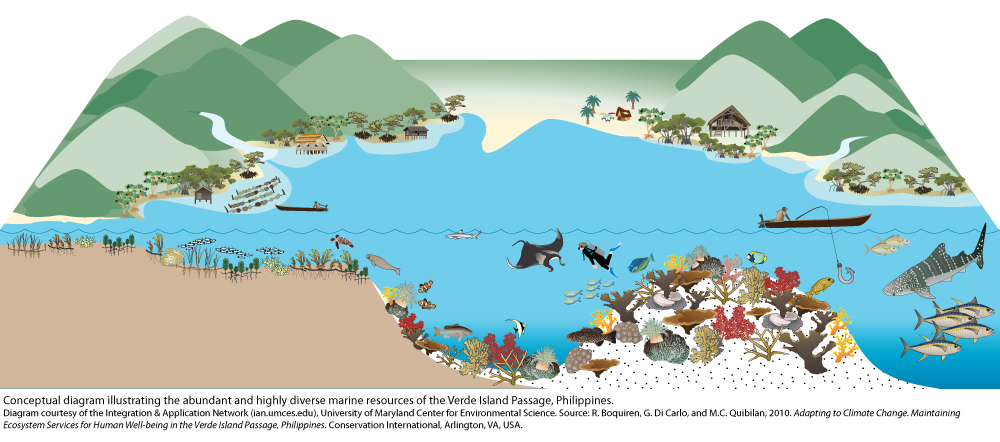Boosting Scotland's Coastal Ecosystem: Seagrass Planting Initiatives

Table of Contents
The Ecological Importance of Seagrass in Scotland's Coastal Waters
Seagrass meadows are often referred to as the "unsung heroes" of our oceans. Their importance to Scotland's coastal waters cannot be overstated.
Biodiversity Hotspots
Seagrass meadows are incredibly productive ecosystems, acting as vital nursery grounds and habitats for a vast array of species. Their dense structure provides shelter and food for countless organisms, supporting a complex food web.
- Supports juvenile fish populations: Many commercially important fish species, including cod, plaice, and sole, rely on seagrass meadows as nurseries, using the protective cover to escape predators and find abundant food.
- Provides refuge for invertebrates: A wealth of invertebrates, such as shrimp, crabs, and worms, make their home amongst the seagrass blades, providing a crucial food source for larger animals.
- Crucial habitat for seahorses and other unique species: Seagrass meadows are also essential habitats for more unique and vulnerable species, including seahorses, pipefish, and various species of shellfish. The loss of seagrass directly impacts the survival of these animals.
Carbon Sequestration and Climate Change Mitigation
Seagrass plays a significant role in mitigating climate change. It's exceptionally efficient at absorbing and storing carbon dioxide (CO2) from the atmosphere, a process known as "blue carbon" sequestration.
- More effective carbon capture than many terrestrial forests: Seagrass meadows are remarkably effective at carbon sequestration, often storing carbon at a rate exceeding that of terrestrial forests.
- Helps mitigate the effects of climate change: By removing CO2 from the atmosphere, seagrass helps to reduce the greenhouse effect and slow the pace of climate change.
- Protecting seagrass protects this vital carbon sink: The degradation or loss of seagrass meadows releases significant amounts of stored carbon back into the atmosphere, exacerbating climate change.
Coastal Protection and Erosion Control
The dense root systems of seagrass meadows stabilize sediments, preventing erosion and protecting coastlines from the damaging effects of waves and storms.
- Reduces wave energy: Seagrass acts as a natural buffer, dissipating wave energy and reducing coastal erosion.
- Improves water clarity: By trapping sediment, seagrass meadows contribute to clearer water, benefiting other marine life that relies on sunlight.
- Protects valuable coastal infrastructure: Healthy seagrass meadows provide a natural defence against coastal erosion, protecting valuable properties and infrastructure.
Seagrass Planting Initiatives in Scotland: Current Projects and Challenges
Several inspiring seagrass planting initiatives are underway in Scotland, but the road to restoration is not without its challenges.
Successful Restoration Projects
While large-scale restoration is still developing, several successful pilot projects demonstrate the feasibility of seagrass planting in Scottish waters.
- Project example 1 (Location, method, results): [Insert details of a specific project, e.g., name, location, planting method (e.g., seed dispersal, transplanting), success rates, area restored].
- Project example 2 (Location, method, results): [Insert details of another specific project, highlighting different techniques or locations].
- These projects showcase the potential for successful seagrass restoration but also highlight the site-specific challenges.
Overcoming Challenges
Seagrass restoration is a complex undertaking, facing numerous hurdles.
- Challenges in seed collection and propagation: Collecting viable seagrass seeds and successfully propagating them in nurseries is a significant challenge, requiring specialized knowledge and resources.
- Impact of pollution and other environmental stressors: Pollution from agricultural runoff, sewage, and industrial discharges can significantly hinder seagrass growth and survival. Sedimentation from dredging or land erosion also presents a major obstacle.
- Funding limitations and the need for collaborative efforts: Seagrass restoration requires substantial funding and collaborative efforts between researchers, government agencies, NGOs, and local communities.
The Future of Seagrass Restoration in Scotland
The future of seagrass restoration in Scotland hinges on technological advancements, community engagement, and supportive government policies.
Technological Advancements
New technologies are being deployed to enhance seagrass planting efforts.
- Use of drones for monitoring seagrass health: Drones equipped with high-resolution cameras and sensors are increasingly used to monitor seagrass meadow health and assess the effectiveness of restoration efforts.
- Development of new planting techniques: Researchers are developing innovative planting techniques, such as using biodegradable mats or deploying seeds via hydroseeding, to improve seagrass survival rates.
- Application of scientific research for improved outcomes: Ongoing scientific research is crucial for understanding the ecological requirements of seagrass and optimizing restoration strategies.
Community Engagement and Education
Public awareness and community involvement are essential for the long-term success of seagrass conservation.
- Citizen science initiatives: Engaging local communities in seagrass monitoring and planting activities can foster a sense of ownership and responsibility.
- Educational programs for schools and the public: Educating the public about the importance of seagrass ecosystems and the threats they face is vital for raising awareness and promoting conservation efforts.
- Volunteer opportunities for seagrass planting and monitoring: Providing opportunities for volunteers to participate in seagrass restoration projects enhances community engagement and strengthens conservation initiatives.
Policy and Government Support
Strong government policies and funding are vital for accelerating seagrass restoration.
- Government funding schemes for restoration projects: Dedicated government funding is essential to support research, pilot projects, and large-scale restoration efforts.
- Environmental regulations that protect seagrass habitats: Robust environmental regulations are necessary to prevent further degradation of existing seagrass meadows and protect restored areas.
- National strategies for marine conservation: A comprehensive national strategy for marine conservation, integrating seagrass restoration into broader marine protection efforts, is crucial for long-term success.
Conclusion
Seagrass planting initiatives are undeniably vital for the health and resilience of Scotland's coastal ecosystem. By restoring these valuable habitats, we can enhance biodiversity, combat climate change through carbon sequestration, and protect our coastlines from erosion. Continued investment in research, innovative techniques, community engagement, and supportive government policies is crucial to ensuring the long-term success of seagrass restoration efforts in Scotland. Let's all work together to protect and expand these vital seagrass meadows – get involved in a seagrass planting project near you and contribute to a healthier Scottish coastline!

Featured Posts
-
 E100 Mlrd V God Bayru O Novom Urovne Obsluzhivaniya Gosdolga Frantsii
May 04, 2025
E100 Mlrd V God Bayru O Novom Urovne Obsluzhivaniya Gosdolga Frantsii
May 04, 2025 -
 Ufc 314 Betting Preview And Predictions For Chandler Vs Pimblett
May 04, 2025
Ufc 314 Betting Preview And Predictions For Chandler Vs Pimblett
May 04, 2025 -
 Grand Theft Auto Vi Trailer A Rewatch And Analysis
May 04, 2025
Grand Theft Auto Vi Trailer A Rewatch And Analysis
May 04, 2025 -
 Report Bianca Censori Seeks Divorce Amidst Kanye Wests Control
May 04, 2025
Report Bianca Censori Seeks Divorce Amidst Kanye Wests Control
May 04, 2025 -
 Hrgovic Sanchez Ibf Mandates Heavyweight Eliminator Fight
May 04, 2025
Hrgovic Sanchez Ibf Mandates Heavyweight Eliminator Fight
May 04, 2025
Latest Posts
-
 Calgary Flames Wolf Playoff Predictions And Calder Trophy Chances Nhl Com Q And A
May 05, 2025
Calgary Flames Wolf Playoff Predictions And Calder Trophy Chances Nhl Com Q And A
May 05, 2025 -
 Nhl Com Interview Wolf On Calgary Flames Playoff Run And Calder Trophy Prospects
May 05, 2025
Nhl Com Interview Wolf On Calgary Flames Playoff Run And Calder Trophy Prospects
May 05, 2025 -
 Washington Capitals And Vanda Pharmaceuticals A Joint Effort For All Caps 2025 Playoffs Success
May 05, 2025
Washington Capitals And Vanda Pharmaceuticals A Joint Effort For All Caps 2025 Playoffs Success
May 05, 2025 -
 All Caps 2025 Capitals Detail New Playoffs Initiatives With Vanda Pharmaceuticals
May 05, 2025
All Caps 2025 Capitals Detail New Playoffs Initiatives With Vanda Pharmaceuticals
May 05, 2025 -
 Wolf Talks Flames Playoff Hopes And Calder Trophy Chances Nhl Com Q And A
May 05, 2025
Wolf Talks Flames Playoff Hopes And Calder Trophy Chances Nhl Com Q And A
May 05, 2025
